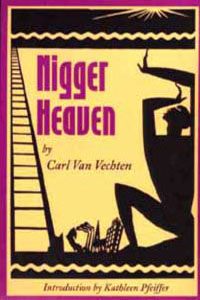Brother Mine: The Correspondence of Jean Toomer and Waldo Frank by Kathleen Pfeiffer (review)Posted in Articles, Biography, Book/Video Reviews on 2014-08-22 14:54Z by Steven |
Brother Mine: The Correspondence of Jean Toomer and Waldo Frank by Kathleen Pfeiffer (review)
Callaloo
Volume 37, Number 3, Summer 2014
pages 735-739
DOI: 10.1353/cal.2014.0094
Jean Toomer’s Cane remains one of the most enigmatic works that emerged during the last century. In the past three decades, critics have probed auto/biography, psychoanalysis, sociopolitical and theological discourse, gender studies, and Toomer’s own critical essays for answers to questions raised by his exploration of racial and national identity and dislocation, black male and female sexuality, and the metaphorical topoi of the United States North and South in the text. Nellie McKay, Robert B. Jones, Rudolph P. Byrd, Farah Jasmine Griffin, Karen Jackson Ford, Mark Whalan, and Kathleen Pfeiffer have unearthed insightful details about the circumstances surrounding Toomer’s formation of a complex racial identity, his life in the immediate years preceding Cane’s creation and publication, and the text’s impact on his subsequent writing and the Afro-modern and postmodern canons.
Whalan’s Letters of Jean Toomer: 1919–1924, published in 2006, and Brother Mine: The Correspondence of Jean Toomer and Waldo Frank, Pfeiffer’s 2010 response, have been particularly important. Letters gives scholars access to Toomer’s willingness to emphasize whatever aspects of his racial and cultural identity would appeal to black and white literati alike at any given moment during the years bookending Cane’s 1923 publication. Moreover, through Letters, Toomer’s co-dependency on Waldo Frank, his closest friend and mentor at the time, comes into fuller focus vis-à-vis impassioned declarations of artistic allegiance and filial devotion. With Brother Mine, Pfeiffer complicates critical notions of their relationship, offering a chronological collation of epistles between the two men. From Frank’s first letter to Toomer in October 1920, Pfeiffer implicates Frank in encouraging Toomer, who was initially reserved and professional, to open up to his input and affections and to the possibilities of publication available to him as a modernist “Negro” poet. In her introduction, Pfeiffer links the dissolution of their friendship to Toomer’s affair with Frank’s wife, art therapist Margaret Naumburg, and marks Toomer a turncoat. However, she discounts the betrayal Toomer expressed feeling in his autobiography of having been reduced to “a fraction of Negro blood” when, in fact, he desired to create “a synthesis in the matters of the mind and spirit analogous, perhaps, to the actual fact of at least six blood minglings” (qtd. in Pfeiffer 29). Ultimately, it would seem the strictures of America’s “one-drop rule” on the social status of one marked black was as much to blame.
What makes Brother Mine compelling, then, is that which made the earliest English and American readers fond of Pamela, The Power of Sympathy, and other epistolary novels: an intimate look at a complex love story. Readers see two men finding homosocial solidarity as they manipulate the constructs of race in the poetry that would become one of the New Negro Renaissance’s first critically acclaimed works. They also see Toomer offer Frank critical feedback on Holiday, Frank’s version of their trip to Spartanburg, South Carolina, which their letters often romanticize—while offering scant details. They read some of the most honest confessions in print of a white American man’s obsession with and hunger to embody blackness, and they witness Toomer deftly navigating his multiracial identity. As he and his beloved Jewish brother reach for a raceless identity neither can attain in America, readers watch them commit the ultimate crime: interracial love. Frank’s gleeful interest in the black American experience is palpable as he alludes to the pleasures and challenges he and Toomer encounter as they venture into the US South. Moreover, it is clear that Frank is living vicariously through Toomer’s relationships with his grandmother, best friend Ken, and on-again, off-again girlfriend Mae. What emerges from their dialogue is both men’s problematic conception of a kind of Lacanian jouissance subsumed in blackness, which Toomer calls a “soil [that] is a good rich brown” that “should yield splendidly to our plowing” in an August 3, 1922, letter in which he makes final plans for the pair’s Spartanburg excursion (59).
Central to the poetic re-envisioning of Cane that emerges in Brother Mine is the homo-social desire that permeates every page. As Pfeiffer notes, the almost…


